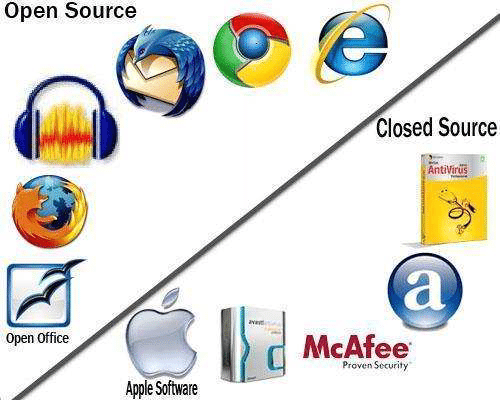Open Vs. Closed Source Operating System

An operating system is a critical component of a computer system that enables other computer programs to function. Your choice of operating system will have a significant impact on how you interact with your computer and what you can do on it.
There are two main types of operating systems: Open source and closed source. In this article, we will be discussing the main differences between the two and their respective advantages and disadvantages.
Open Source Operating System
An open-source operating system is one whose source code is freely available for modification, reuse, and distribution. Developers around the globe can access, use, and change the code at will, creating different versions, upgrades, and variations of the original.
Linux is one of the most popular open-source operating systems in use today, with versions tailored for enterprise computing, mobile devices, servers, and Internet of Things (IoT) devices.
Advantages
Open-source operating systems offer several advantages over closed-source alternatives, including:
1. Accessibility: As the source code is freely available, developers worldwide can collaborate and contribute towards developing a superior and secure operating system.
2. Cost-effective: Open-source operating systems are typically free, making them more cost-effective for users who are not willing to spend a good amount of money on commercial operating systems.
3. Security: With tens of thousands of developers scrutinizing the code and contributing to its development, open-source operating systems usually have fewer security vulnerabilities than closed-source alternatives.
Disadvantages
Despite the advantages, open-source operating systems may also come with a few drawbacks, such as:
1. Complexity: Unlike commercial operating systems that come with pre-packaged software and a uniform appearance, open-source operating systems may take time to learn and configure, especially for new users.
2. Limited support: While open-source operating systems boast a large community of developers, they may lack the extensive support that commercial operating systems offer, especially for issues that require immediate attention.
Closed Source Operating System
Closed source (also known as proprietary or commercial) operating systems, on the other hand, have their source code withheld from public access, limiting their customization and tailoring options.
Operating systems such as Microsoft Windows and macOS are examples of closed-source operating systems.
Advantages
Closed-source operating systems come with benefits such as:
1. Ease of use: Commercial operating systems come pre-packaged with software and an intuitive graphical user interface (GUI), making them easier to use and navigate than open-source alternatives.
2. Support: Commercial operating systems have dedicated teams providing reliable support resources, including documentation, user forums, and customer service.
3. Security: Commercial operating systems undergo rigorous testing and debugging, making them less prone to vulnerabilities when compared to open-source options.
Disadvantages
It is essential to consider that closed-source operating systems also have drawbacks, which include:
1. Lack of freedom: Users are limited in their ability to modify or tailor software to suit their needs.
2. Costly: Commercial operating systems require users to purchase user licenses which can be expensive in some cases.
3. Proprietary software: Commercial operating systems often come with proprietary software, which may lead to vendor lock-in and vendor dependency.
Conclusion
Choosing between open-source and closed-source operating systems often depends on individual preferences, needs, and circumstances. While open-source operating systems offer more flexibility and cost-effectiveness, closed-source alternatives offer reliability, ease of use, and extensive customer support. Ultimately, the choice of which operating system to use boils down to user preference and the nature of the tasks to be performed on the computer system





